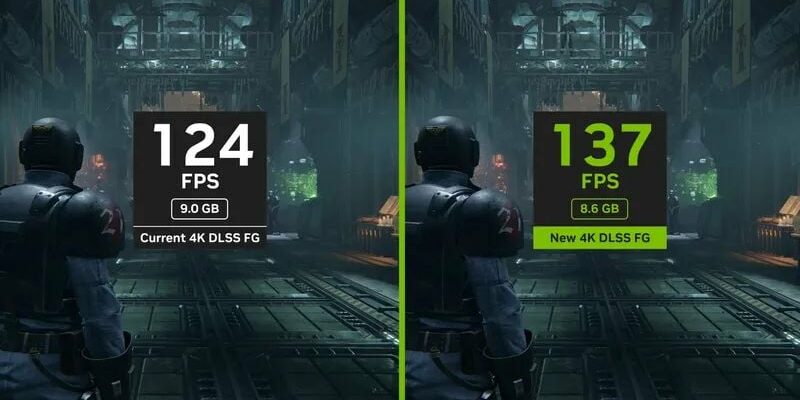NVIDIA has updated DLSS technology for the RTX 40 series. The new artificial intelligence model offers faster performance and lower VRAM usage.
The leader in graphics card technology NVIDIAannounced that it has updated the DLSS (Deep Learning Super Sampling) frame generation technology for RTX 40 series GPUs. This innovation increases game performance and reduces VRAM usage, making the user experience more efficient. This step by NVIDIA aims to offer players a smoother and faster gaming experience.
Updated DLSS Frame Generation Technology
NVIDIA first introduced DLSS technology with the RTX 40 series and has continuously improved it since then. The company’s frame generation technology provides a smoother image by filling in the gaps between frames in games. NVIDIA’s new update takes this technology one step further with an improved artificial intelligence model.
New DLSS frame generation technology offers lower latency and less VRAM usage. For example, according to a test conducted by NVIDIA, this update can use approximately 400 MB less VRAM in the same game scenario. This is a great advantage especially for video card users with 8 GB VRAM.
The new version of DLSS not only improves performance but also comes with features like Enhanced Ray Reconstruction, Super Resolution and DLAA (Deep Learning Anti-Aliasing). DLAA is currently in beta and can run on all GPUs from the RTX 20 to RTX 50 series. However, frame production technology is only available for the RTX 40 and RTX 50 series.
NVIDIA admitted that there were latency problems in the first version of the frame generation technology that came with DLSS 3.0. However, it is stated that with DLSS 4.0, these problems have been largely eliminated and the delay time has been reduced to a minimum.
NVIDIA aims to offer its users a faster and smoother gaming experience with its updated DLSS frame generation technology. Thanks to low VRAM usage, it becomes possible to achieve better performance, especially in high-resolution games.
